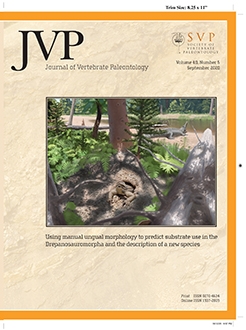During the land-to-water transition in the Eocene epoch, the cetacean skeleton underwent modifications to accommodate life in the seas. These changes are well-documented in the fossil record. The forelimb transformed from a weight-bearing limb with mobile joints to a flipper with an immobile carpus. We used micro-CT imaging to assess evolutionary changes in carpal size, orientation, and articulation within Eocene cetacean taxa associated with the transition from a terrestrial to amphibious niche. We compared Ambulocetus natans, a well-preserved amphibious archaeocete, with other archaeocetes, and with Eocene terrestrial artiodactyls, the sister group to Cetacea. A cylindrical carpus in terrestrial taxa evolved into a mediolaterally flattened, cambered carpus in the semi-aquatic and fully aquatic cetaceans. Specifically, the pisiform bone shifted from a ventral orientation in terrestrial taxa to a lateral orientation, in plane with the carpus, within semi-aquatic and fully aquatic taxa. Flattening of the carpus, including lateral rotation of the pisiform, likely relates to functional shifts from weight-bearing terrestrial locomotion to aquatic locomotion. This laterally projecting pisiform morphology is retained in all extant cetaceans. Our results suggest this shift, along with other modifications to the carpus, predominantly occurred during the middle Eocene and facilitated an obligatorily aquatic lifestyle in late Eocene cetaceans.
How to translate text using browser tools
5 January 2021
Carpal Morphology and Function in the Earliest Cetaceans
L. M. Gavazzi,
L. N. Cooper,
F. E. Fish,
S. T. Hussain,
J. G. M. Thewissen
ACCESS THE FULL ARTICLE






